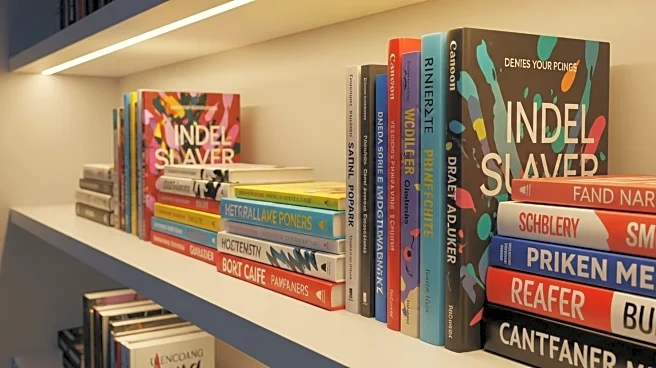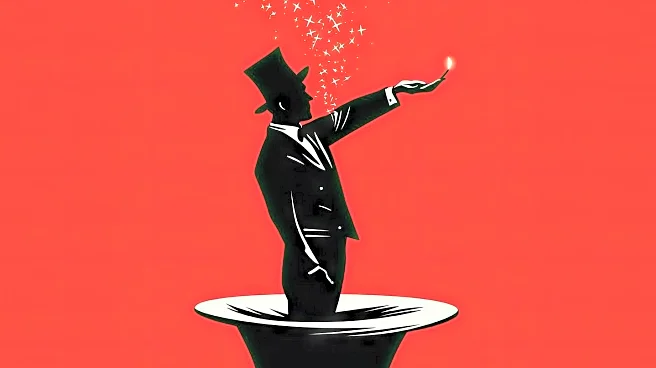What is the story about?
What's Happening?
ND Stevenson, known for creating the graphic novel 'Nimona', is making his prose debut with 'Scarlet Morning', the first book in a middle-grade duology. The story follows teenagers Wilmur and Viola, who are left on an isolated outpost after a storm transforms the ocean into a salt desert. They protect a book of esoteric knowledge and strike a deal with Captain Cadence Chase to be ferried to the city of Faire Distance. Stevenson discusses the challenges of transitioning from comics to prose, emphasizing the need to reconnect with his childhood inspirations and the characters he created years ago. The novel is a blend of visual and written storytelling, with illustrations complementing the prose.
Why It's Important?
Stevenson's transition from graphic novels to prose highlights a significant shift in his creative process, reflecting broader trends in the publishing industry where creators explore multiple formats. This move could influence other graphic novelists to experiment with prose, potentially expanding their audience. The novel's unique blend of illustrations and text may appeal to young readers, fostering a new appreciation for storytelling that combines visual and literary elements. This approach could also impact how middle-grade fiction is marketed and consumed, encouraging publishers to support more hybrid storytelling formats.
What's Next?
The second book in the duology promises to expand the story's universe with new settings and a larger monstrous presence, which Stevenson is particularly excited about. Readers can expect more intrigue and action, with the narrative's mysteries set to unfold further. As the series progresses, it will be interesting to see how Stevenson's storytelling evolves and how his audience responds to the blend of prose and illustration. The success of 'Scarlet Morning' could pave the way for more authors to explore similar storytelling techniques.
Beyond the Headlines
Stevenson's work raises questions about the role of visual elements in prose storytelling and how they can enhance or detract from a reader's imagination. By carefully choosing which scenes to illustrate, Stevenson aims to complement rather than overshadow the reader's mental imagery. This approach may influence future authors to consider how illustrations can be strategically used in prose to enrich the narrative experience without limiting the reader's creative engagement.
AI Generated Content
Do you find this article useful?













